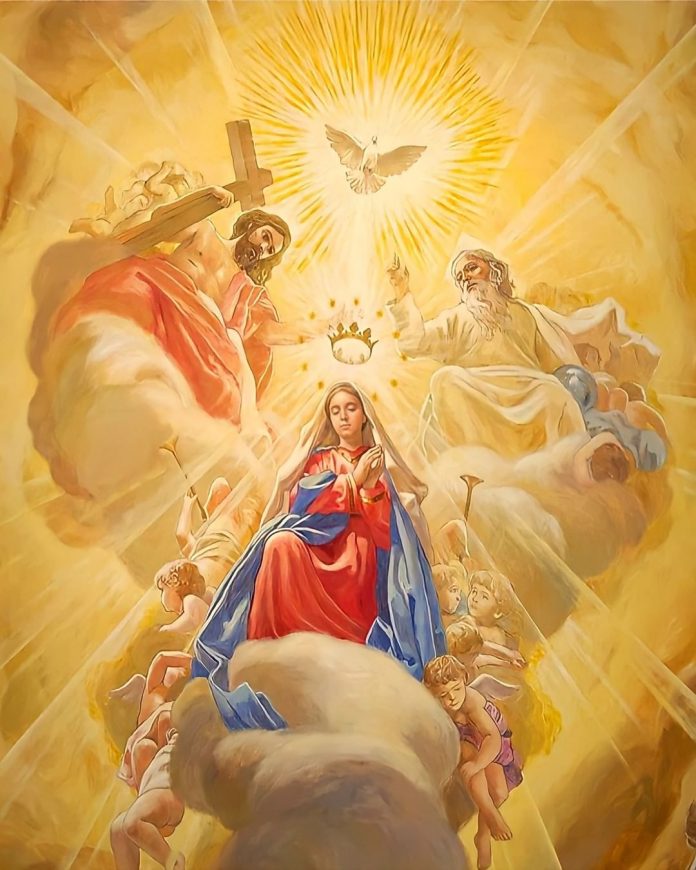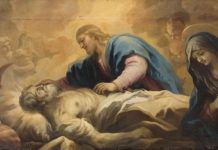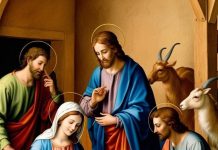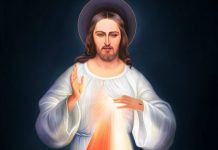Assumption of Mary into heaven is a dogma defined by the Catholic Church. The belief in the assumption of the Blessed Virgin was present in the Church from early centuries. John Damascene (675–749) records that during the Chalcedon Council (AD 451), the Bishop of Jerusalem, while replying to an enquiry from the emperor Marcian about the body of the Mother of God, stated that ‘Mary died in the presence of all the Apostles, but that her tomb, when opened upon the request of St. Thomas, was found empty; wherefrom the Apostles concluded that the body was taken up to heaven’.
Centuries later, the Church declared the assumption of Mary as a dogma. The fact is that the Church could not have drawn any other conclusion from the vast volume of theological evidence and references to tradition – both in the Catholic and Orthodox churches – about the assumption of the Mother of God. Even before the belief was raised to the status of a properly defined dogma, the presumption about assumption was well recorded.
Mary’s life deserved nothing less than a crown in heaven, that too immediately after the conclusion of her earthly life. She was immaculate in birth, life, and death. Why should her soul wait further to enter its final destination and why should her body undergo the natural process of decay?
Doubts still remain, some might argue! How is it possible that a mortal is raised to heaven defying the laws of nature? Elijah will answer them.
‘As they (Elijah and Elisha) continued walking and talking, a chariot of fire separated the two of them, and Elijah ascended in a whirlwind into heaven’ (2 Kings 2:11). If it happens today, we will doubt it. We will find some scientific reasons behind the ‘optical illusion’ of Elisha to explain what he experienced. But back then, the people were not so sophisticated, and were ready to believe that miracles do happen. While Elisha was accompanying Elijah in Bethel, the prophets there asked him; “Do you know that today the Lord will take your master away from you?” And he said, “Yes, I know; keep silent” (2 Kings 2:3). This question was repeated at Jericho too and Elisha gave the same answer. Neither the prophets nor Elisha were skeptic about the possibility of God taking a man into heaven. Because they knew about an earlier incident when a man who walked with God was taken by God into heaven; ‘Enoch walked with God; then he was no more, because God took him’ (Gen 5:24).
If it is possible for mortals like Elijah and Enoch to be given such an enviable ending to their earthly life, how much more the Blessed Virgin, being immaculate, should be entitled to be assumed into heaven? What I would like to remind the skeptics is that the assumption of Mary is not a mere presumption, but one well founded on Biblical verses.
But for us, the children of Mary, we do not need any empirical evidence to convince ourselves that our Mother was assumed into heaven. For us, she is the ‘Ark of God’s covenant’ placed in God’s temple in heaven. ‘Then God’s temple in heaven was opened, and the ark of his covenant was seen within his temple; and there were flashes of lightning, rumblings, peals of thunder, an earthquake, and heavy hail’ (Rev. 11:19). She is the ‘woman clothed with the sun’ (Rev. 12:1). Moon was under her feet, and stars were her crown. Such resplendence can be from heaven only. We do not need lengthy theological explanations to believe that the Holy Mother was assumed into heaven. We believe it. The church believed it. ‘Munificentissimus Deus’, the apostolic constitution issued by Pope Pius XII in 1950 was a formal declaration of what Christians believed for nineteen centuries.
“Look today at your heavenly Mother, assumed to the glory of paradise, even with her body. Unite your-selves to the joy of all the angelic cohorts, of the saints, and of the souls who are still being purified in purgatory. Share also in the joy of the Church, pilgrim in the desert of the world and of history, which contemplates your heavenly Mother as a sign of consolation and sure hope. I am a sign of sure hope for the Church, as She walks toward’ (Message No 549- To the Priests, Our Lady’s Beloved Sons)
Looking towards this glorious ‘sign of sure hope’, let us rejoice in the hope of our own entry into heaven, keeping in mind how our Holy Mother was assumed into heaven. Let us also try to emulate those heavenly virtues with which the Blessed Virgin adorned herself.

















